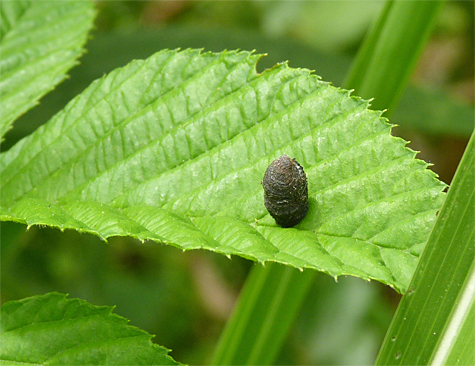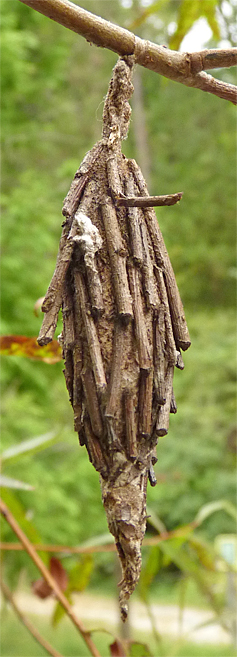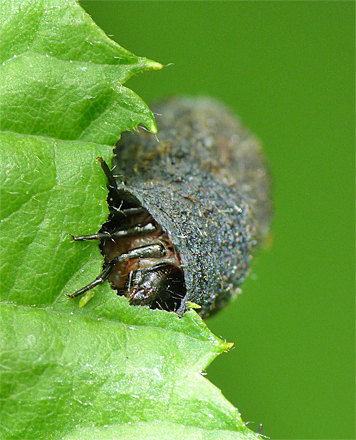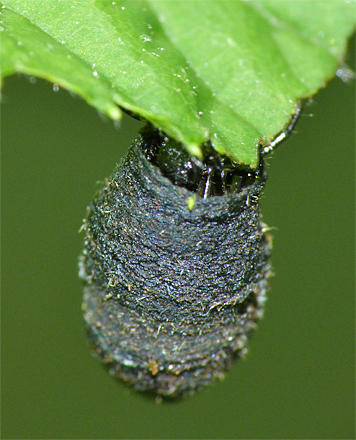While standing on the path looking out over the Wetlands I noticed a tiny, rough, brownish blob sticking up from one of the blackberry leaves in front of me.

I had seen one of these before, in fact I had previously seen several of them on blackberry leaves at my home. I didn’t know what they were then and I didn’t know what the one before me now was. I did know, however, that there was some kind of creature within this strange looking bag-like object when I first laid eyes on it. I thought it was a pupa of some unknown (to me) insect. But when I touched it, it moved. It walked away. Pupae usually don’t walk away.

This strange creature looks to me like a very small bagworm. Bagworms make a case, or bag, from plant material taken from the tree that they happen to be on. Bagworms are larvae of moths. Our little friend could have been a moth larva, or it could have been a beetle larva, but I wasn’t sure.
Once again I turned to our friends at BugGuide, that wonderful Internet insect resource, for help. I posted the pictures that you see here (above and below) and voila, not quite as if by magic, but by some very knowledgable people, an answer came. My mystery creature was, and is, a beetle larva.
My little bag of wonder is in a family of beetles know as leaf beetles (Chrysomelidae), the subfamily of case-bearing leaf beetles (Cryptocephalinae), and the tribe of warty case-bearing leaf beetles (Chlamisini). And, due to the fact that the larva was feeding on blackberry, I was informed that this beetle is in the genus Neochlamisus. How about that!

There’s more. The bag that the larva encases itself in is made from its own feces and plant debris. And get this, the adult resembles caterpillar frass. Remember what caterpillar frass is? It’s caterpillar poop!
So, let’s get this straight, as a youngster this beetle encases itself in insect feces and as an adult it looks like insect feces.

Hiding one’s self in the guise of feces must be a successful strategy, after all, many butterflies and moths look like bird droppings either as adults, or more frequently as larvae. But it’s usually one or the other, this beetle’s life seems to revolve around it.
Note: I frequently locate caterpillars by the telltale trail of frass that they drop either on the ground or on the leaves, below which, the caterpillars are feeding. I’m going to have to take a closer look at the frass that I encounter in the future, there may be beetles among those droppings!
I thank you for this. I saw one of these and googled “larva that makes a case out of frass” and your page came up. Yes, it was on blackberry.